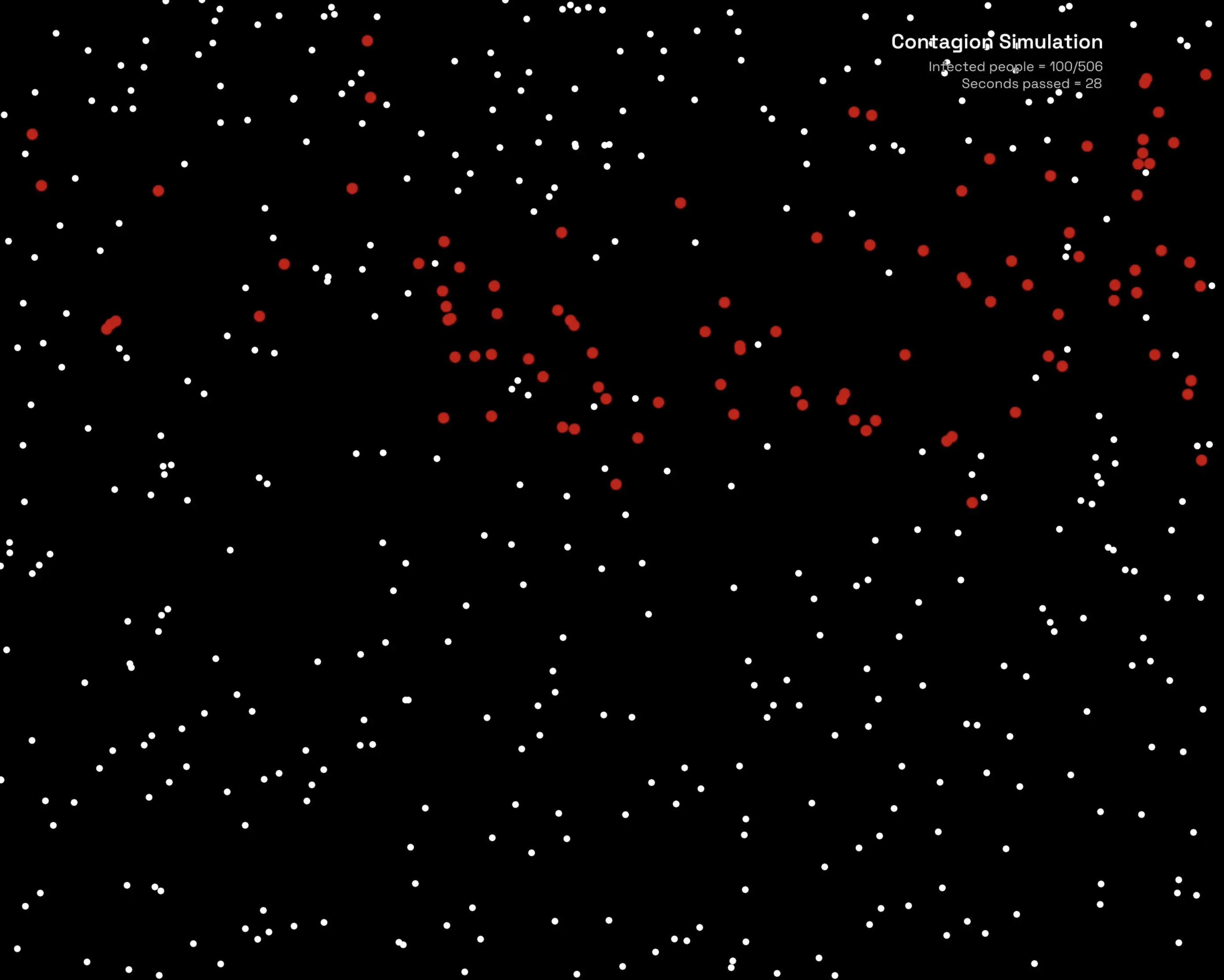

Experiment made during the Xperimenters programme at Science Gallery Bengaluru
Self-led
p5.js
After a conversation about Motility-Induced-Phase-Separation (MIPS) with Shashi Thutupalli, a biophysicist at NCBS, I became very interested in the behaviour of active matter. Some time prior to the meeting, I had also watched a talk by Damon Centola titled The Network Dynamics of Social Change. As I wrote in my Xperimenter journal:
"The itch to create something that combined the two was far too great to avoid."
Over a weekend, I built a contagion simulator – free-moving particles with the ability for a person to induct an infected particle by clicking on the screen. If an infected particle touched a healthy particle, the healthy particle would get infected. The simulation was a means to see what kinds of spreads are more powerful – spreads on the periphery, or ones that originate from the centre.
3 different contagions spreading over time (sped up).
Contagions from 4 sides (normal speed).
All the code is available here.